The Definitive AKG C214 Review
Can you really get the legendary AKG sound for a fraction of the price?
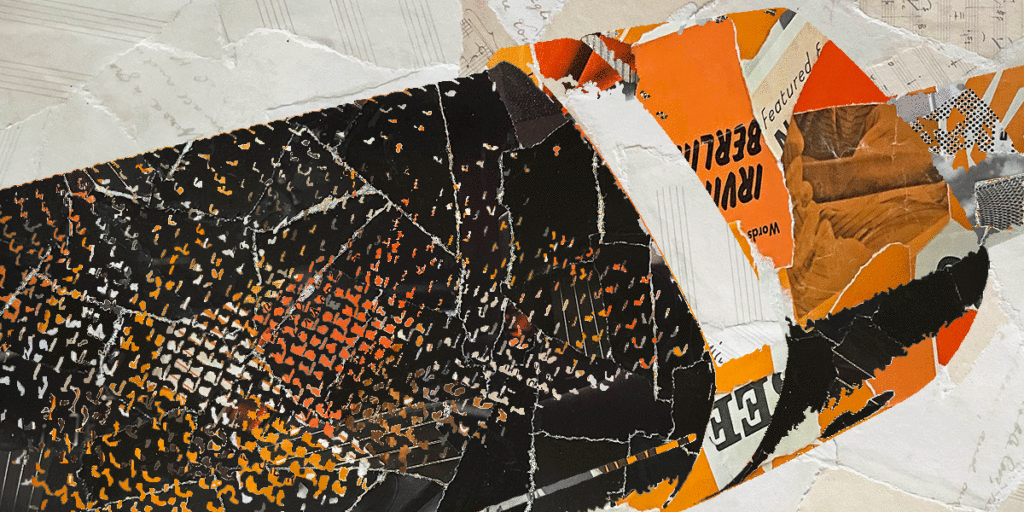
Reviewed by: Paul Narang
Review date: June 2023
Current price: Under $400
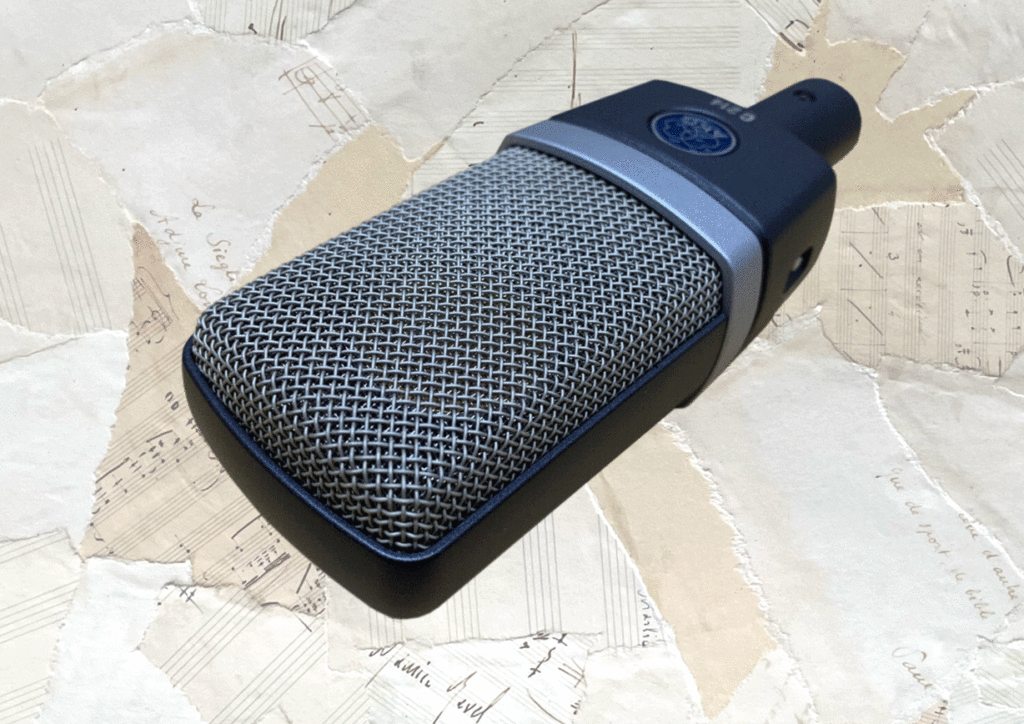

AKG C214 Review
| Pros: | Cons: |
| Clear, bright sound -20dB Pad adds versatility Low cut filter | High End too prominent for some uses Only one low cut frequency setting |
AKG C214 Review
The AKG C214 is a premium-quality studio microphone aimed towards mid range budgets. A large diaphragm cardioid condenser with a clear and bright sound, the C214 is well suited to vocals, acoustic guitar, horns, and as overheads for drums.
What is it?
AKG introduced their famous C414 series microphones in 1971 (full review here). Since then they’ve gained an enviable reputation as some of the most versatile studio condensers available, with a detailed and clear sound.
AKG have honed and developed the range over the years, making tweaks and improvements to the detailed and clear sound. But if there was one criticism of the AKG C414, it would have to be the price! It’s a capable mic with a price tag well out of the budget of many musicians and producers.
Enter the AKG C214…
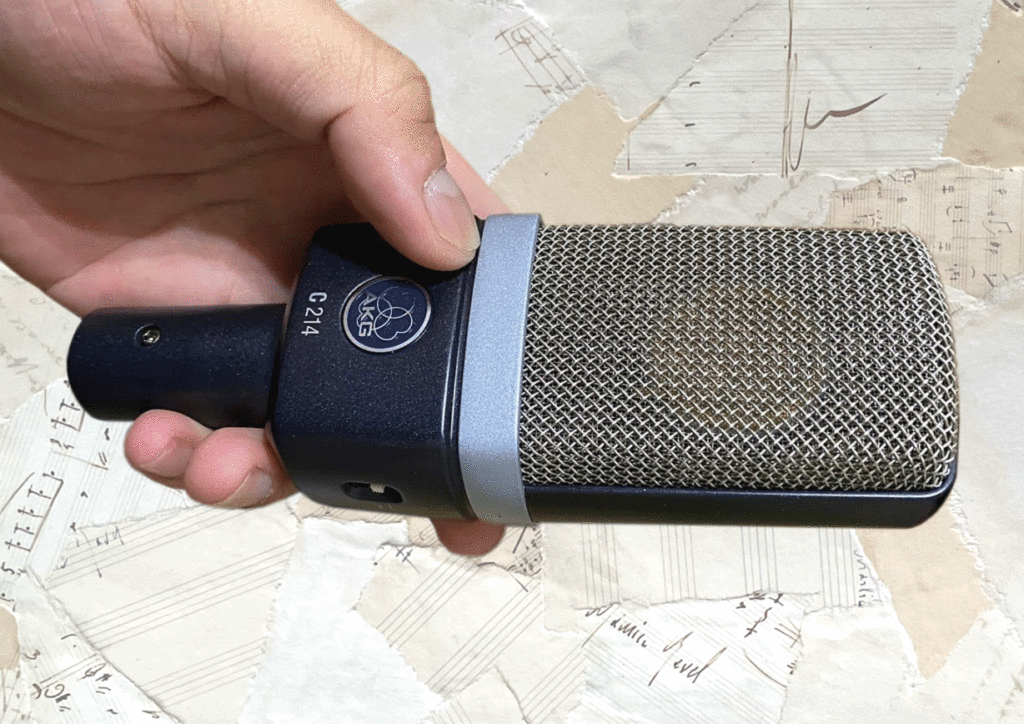
Conceived as an affordable alternative to the renowned C414, AKG have pared the C214 back to only the most essential features. It has a fixed cardioid polar pattern, a low-cut filter, and a -20db pad. It also looks just as good as the C414, but retails for less than half the price.
The AKG C214 has a bright, clear sound with a sparkling top end. It’s a mic which captures a lot of high-frequency detail, whilst still effectively controlling some of the harsher sibilance on vocals. The -20db pad allows it to cope with louder sound sources, making it a great choice for horns and drum overheads.
AKG claim it has the same signature sound as the C414, but at a fraction of the price. But is that really the case?
In the box
The AKG C214 ships in a bespoke metal flight-case, and includes:
- 1 x Universal Shock Mount
- 1 x Foam Windshield
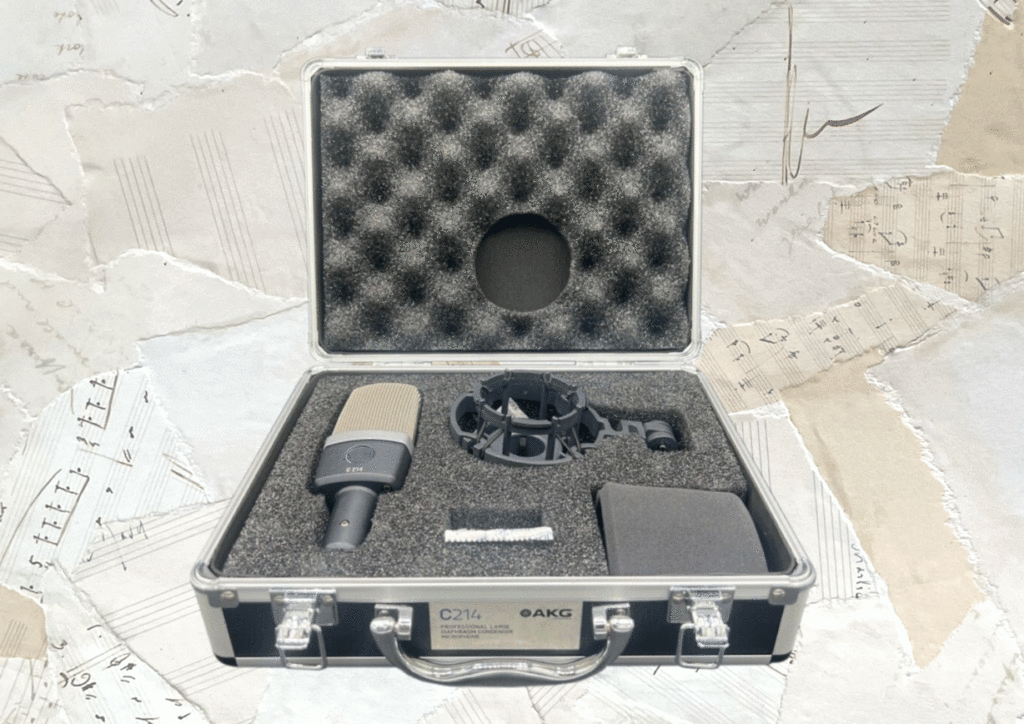
AKG C214 Polar pattern
Unlike the more expensive C414, which has multiple pickup patterns to select, the C214 uses a fixed cardioid pickup pattern. In practice, this is the setting you’d probably have your C414 on for 90% of the time in the studio.
The polar pattern forms a heart shaped area of sensitivity in front of the mic. It works as you’d expect a mic to work – picking up most of the sound from the front, but far less from the back and sides.

The cardioid pattern is a great choice for home studios where there hasn’t been much acoustic treatment. It will pick up the sound of the vocalist or instrumentalist in front of the mic, while rejecting the sound of the room.
Take a look at the diagram below to see how the cardioid pattern changes on the C214, depending on the frequency of the sound being recorded. The heart shape becomes slightly more circular around the midrange:
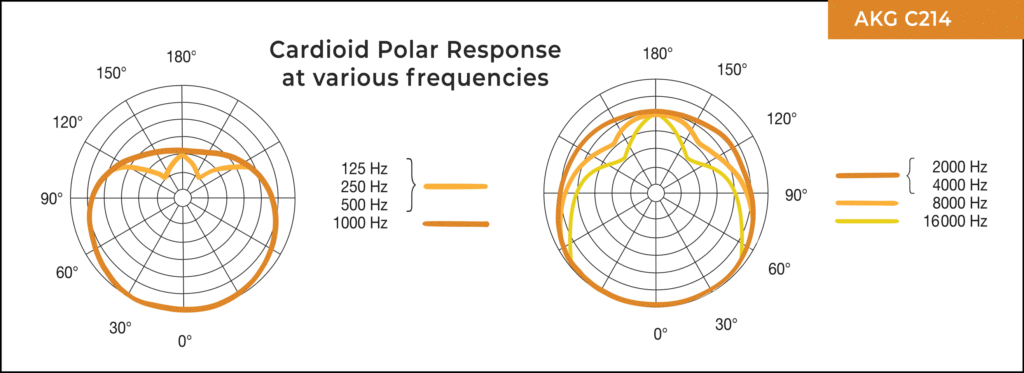
Phantom power for the AKG C214?
As a condenser microphone, the AKG C214 will need phantom power. Phantom power is low voltage current sent to the microphone from a microphone preamp, mixing desk, or audio interface, sent through the XLR cable to the microphone.
If your audio interface or mixer doesn’t provide phantom power, there is another solution: connect your mic to an external 48 volt phantom supply. Then connect the output of the phantom supply to the mixer, or audio interface.
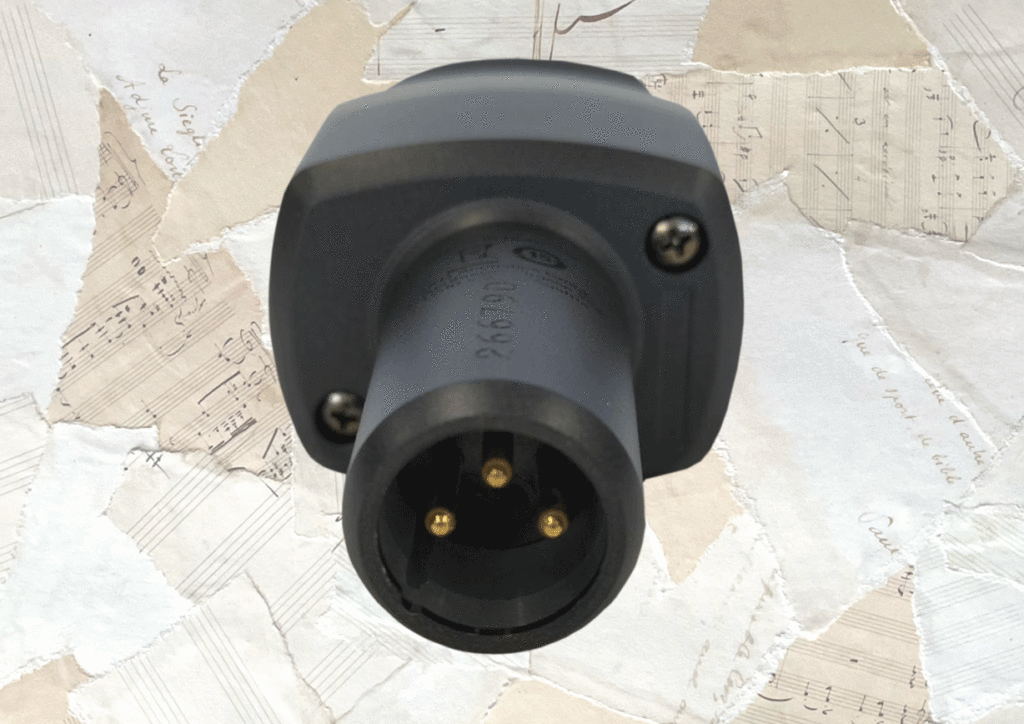
Connecting the AKG C214
The C214 uses an XLR cable to connect directly to the audio interface or mixer. XLR is the standard connector for professional studio equipment. An XLR connector is ‘balanced’, which means the cable is shielded from interference and carries a higher signal than unbalanced cables.
XLR cables are the only cables capable of carrying phantom power to the mic.
The AKG C214 Design and Build
The AKG C214 features the same classic look as the more upmarket C414. It is rectangular in shape with a slight diamond-like tapering towards the bottom. It features an all metal die-cast body with a metal grille over the diaphragm. The metal grille feels sturdy, but I found that it has a little bit of give in it so you wouldn’t want to knock or drop the microphone.

On the front you have the classic AKG logo and model name. On each side of the microphone you have a switch: the low-cut filter and the -20db pad. Inside the microphone you have a 1” dual diaphragm electret condenser capsule based on a classic AKG design. This is held in place by an integrated suspension mount which helps reduce vibrations and mechanical noise from the stand.
In all, the AKG C214 has a sleek, paired-back design which combines durable build quality with some essential features.
AKG C414 Dimensions and Weight
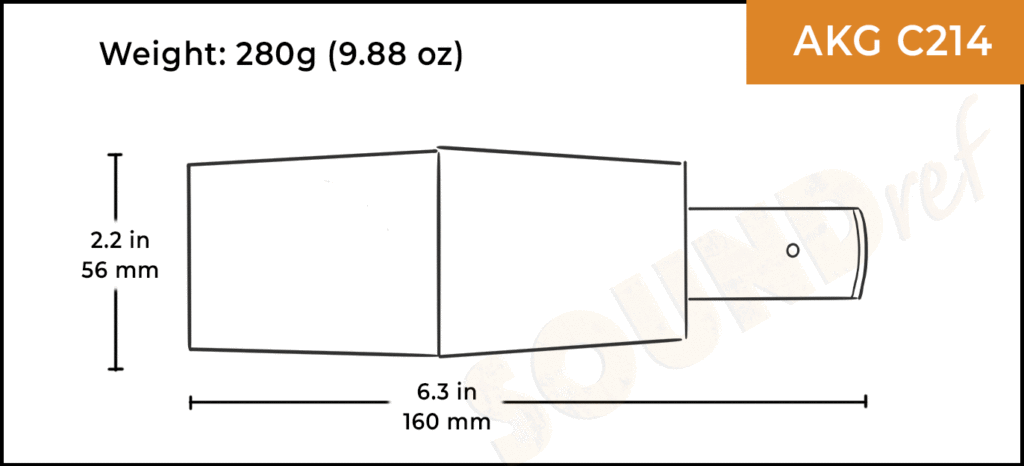
The C214 has a distinctive, neat and compact design, very similar to the C414. At 180g, the 214 is slightly lighter than the C414, but surprisingly very slightly wider. The low weight and size make the AKG C214 a natural choice as an overhead, without the danger of causing the boom arm on the mic stand to droop.
- Width: 56 mm
- Height: 160 mm
- Net Weight: 280g (9.88 oz)
AKG C214 frequency response
The AKG C214 has an impressive frequency range of 20Hz- 20kHz, wide enough to capture detail across the whole range of human hearing. Below 60Hz you’ll find a gentle roll-off, followed by a flat response between 60hz-700Hz.
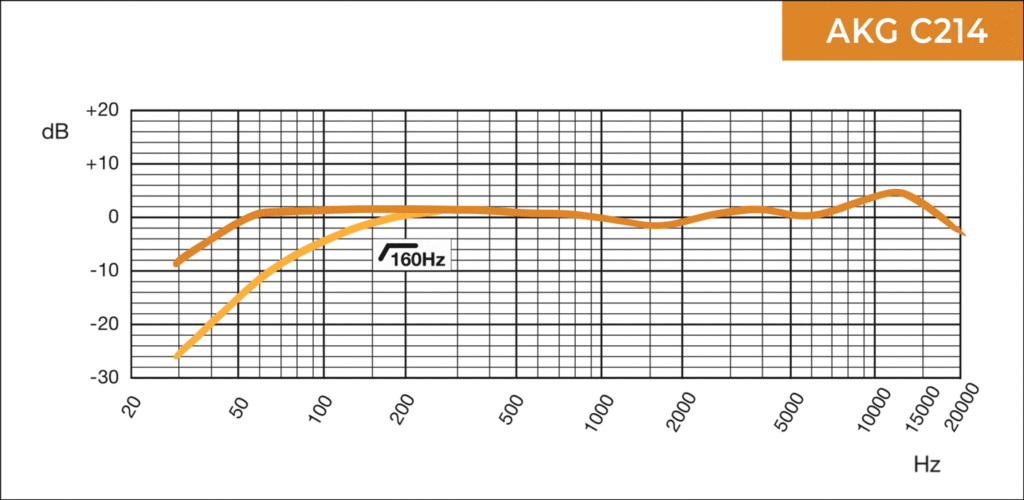
In the higher range we see a little more variation. Between 700Hz and 3.5kHz, there’s a gentle dip at around 4dB. Then from 6kHz up to 13kHz, there’s a small boost of around 3 to 4db. This gives the AKG C214 a classic “scooped” sound – one that pulls out some of the midrange mud, whilst accentuating the rich lows and sparkling highs.
The benefits of this are a very ‘flattering’ sound, which can bring out the best qualities of otherwise boomy, dull or muddy sound sources.
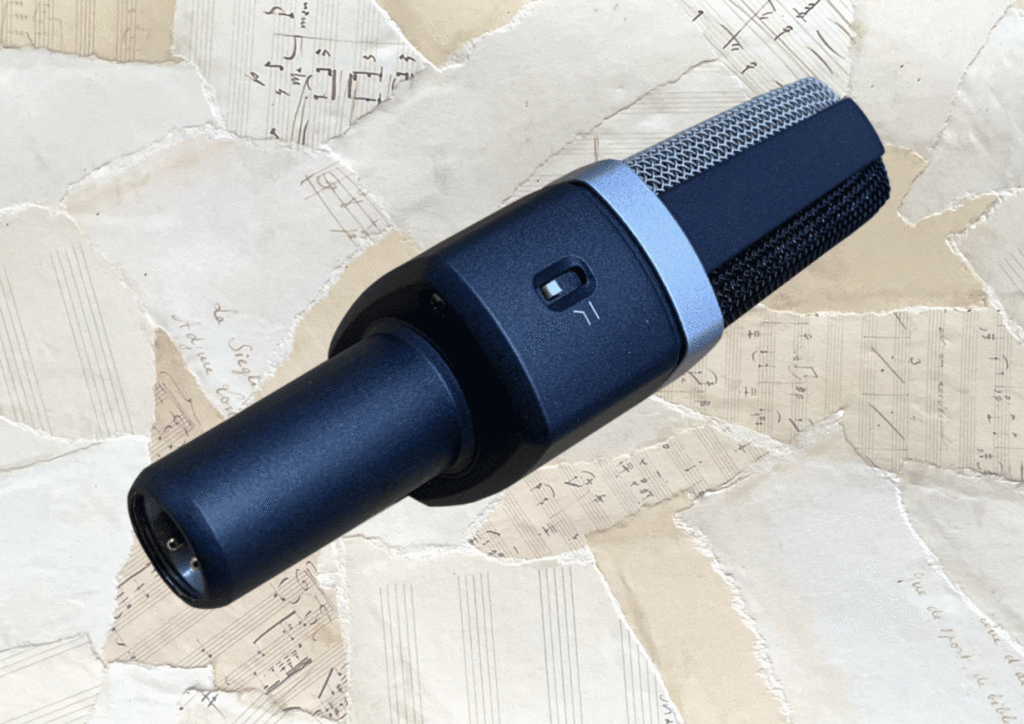
The C214 also has a low-cut filter switch, which rolls off the lower end below 160Hz. This is incredibly useful for reducing the proximity effect or combating any boominess. In practice, I found the curve to be a little too aggressive for my voice, but it can be very effective on deeper voices or for miking up guitar amps.
Overall, the frequency response of the AKG C214 provides a bright and clear tone, which sounds great in a range of recording situations.
AKG C214 Sensitivity and Impedance
Studio condensers are often on the more sensitive end of the scale, and the AKG C214 is no exception, with a high sensitivity rating of 20 mV/Pa (-34 dBV).
The advantages of high sensitivity mics
The C214 picks up a great deal of detail, especially compared to dynamic mics, and it’s capable of making some beautifully nuanced recordings. You can also place the mic a little further away from the sound source, whilst still producing full sounding, accurate recordings.
The disadvantage of high sensitivity mics
Like any sensitive condenser mic, the C214 picks up more background noise and room reverberations than a dynamic mic. If you want the best out of a 214, record in a quiet, acoustically treated space. If you don’t have this option, you can engage the -20dB pre-attenuation pad, which will help to a certain extent. It won’t actually make the mic less sensitive, but it will increase the maximum SPL by 20dB to 156dB. This is great for recording louder sounds and instruments.
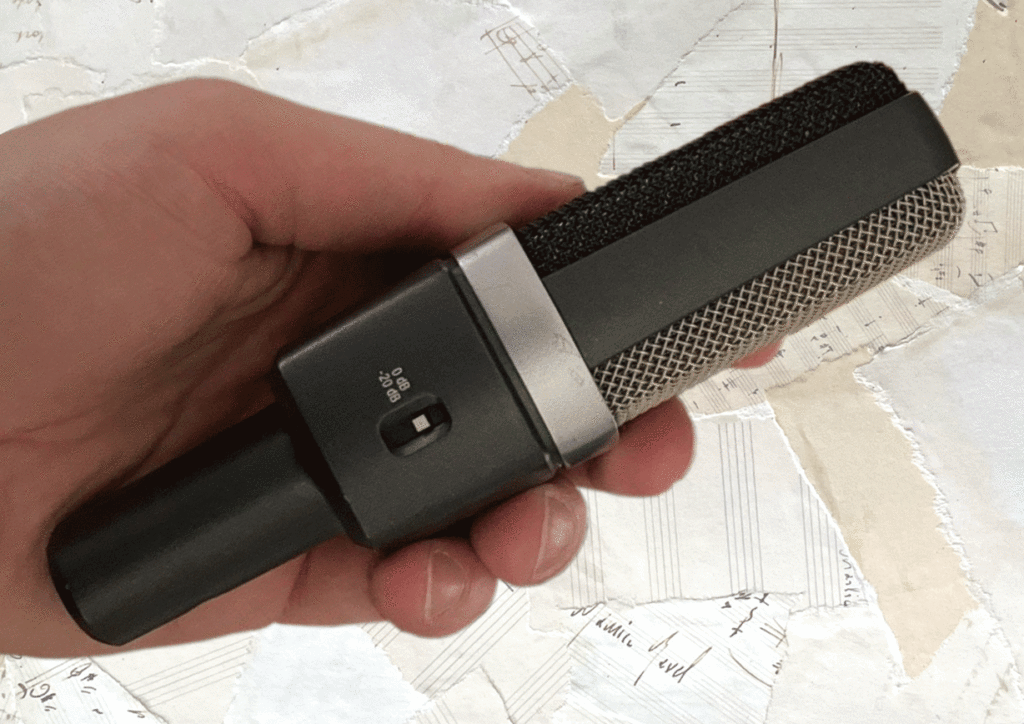
The AKG C214 impedance level
Like many studio condensers, the AKG C214 has a low impedance level. At 200 ohms, this means the microphone signal can be run through very long lengths of cable without degrading the quality of the output signal. For the cleanest possible signal, it is always best to use a balanced XLR cable.

AKG C214 Sound quality
The AKG C214’s big bother, the C414, has long been an industry standard, prized for its superior clarity and detail. The C214 claims to bring the same signature sound to those on a budget. It’s a mighty claim, but how true is it?
Listening critically to the sound of the C214, I found the low-end to be well controlled, with just enough of the proximity effect to be an asset to singers, without being overbearing. And to my ears the mid-range was smooth and balanced. The most striking sonic discovery was in the top end. The C214 has a bright, airy, sparkly sound, brimming with nuance and detail.
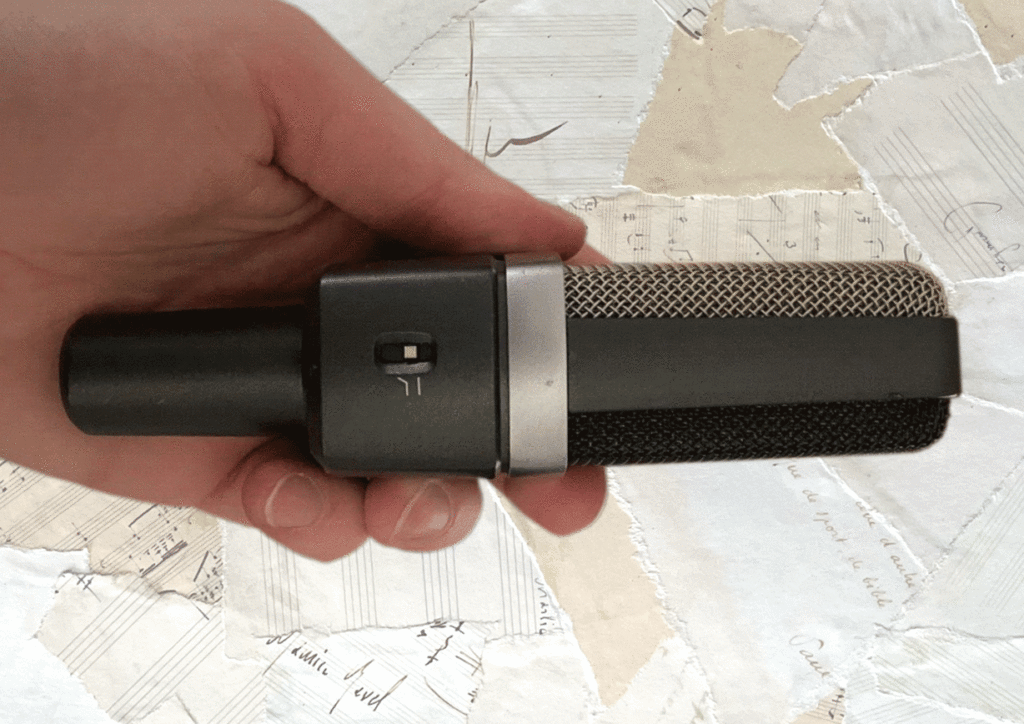
Despite the high frequency boost, when compared to a C414, the sibilance was never harsh. When I tried out spoken word, I was impressed with how it easily handled all the ‘ess’ sounds, whilst simultaneously offering a lot of brightness in the high end.
All microphones have their own character, and no microphone will be equally suited to every voice. However, the C214 may come close to becoming the exception. While trying out a few sound sources, including a saxophone, various singers and a drum kit, the one thing I noticed is that it instantly gives any recording ‘clarity’. It sounded great on all of the vocals, but particularly good on rap.
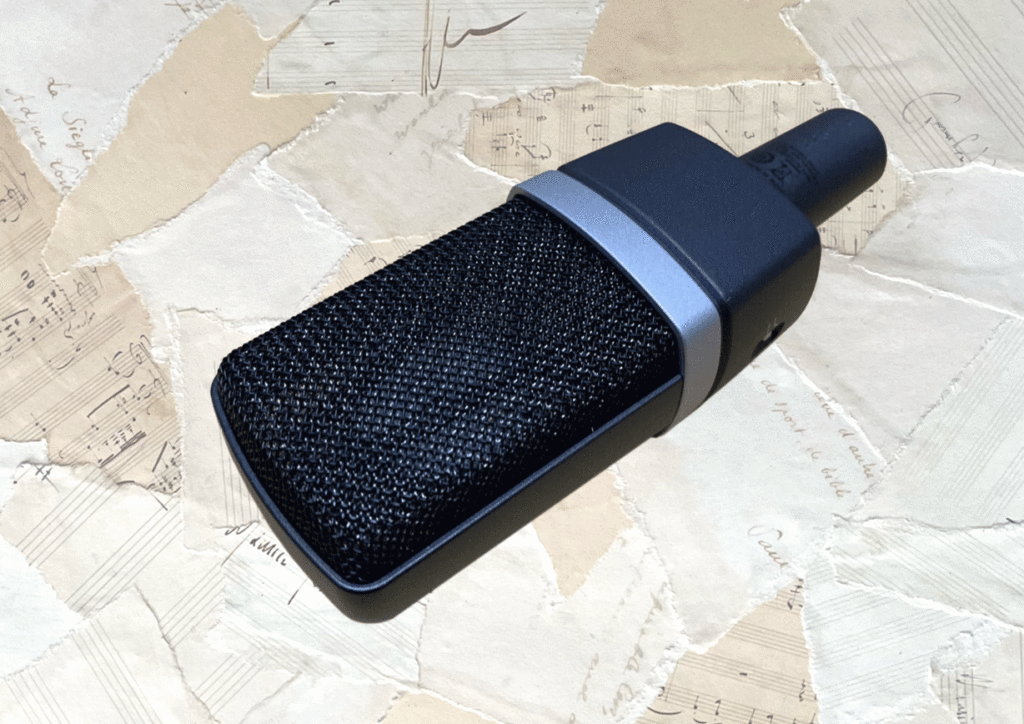
I also tried the C214 on both nylon and steel string acoustic guitars with great success – a glistening, detailed, spacious sound. For horns and drums I engaged the pad, as they’re particularly loud sound sources.
But is the AKG C214 a C414 in cardioid mode? In a word, no. It’s a very different mic altogether, with a more prominent high end. It sounded great in its own right though, and would certainly compliment a C414!
AKG C214 in the recording studio
Working with the AKG C214 in the studio was a pleasure, and I’d be happy to have a pair of these on hand. They have a degree of versatility, which when combined with the sound quality adds up to an attractive proposition.
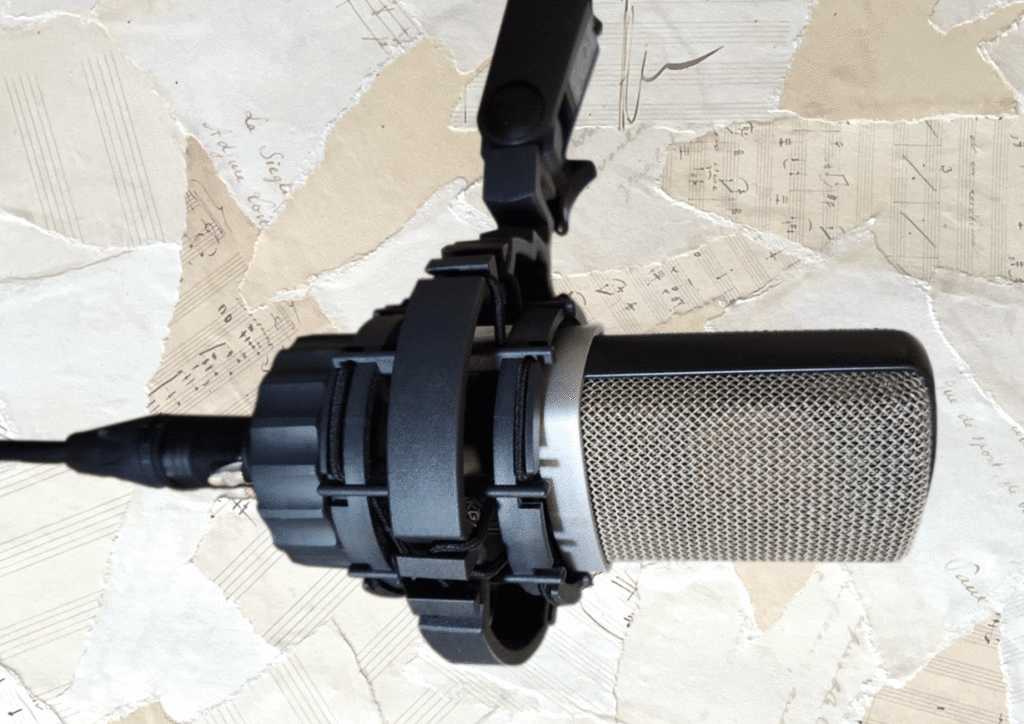
One of the best practical features is the -20dB pad. You can move from recording singers to horns and drums with the flick of a switch. It not only reduces the output level by 20dB, but increases the maximum SPL from 136dB to 156dB. This means no risk of distortion when recording those loud or aggressive sound sources.
It has a standard cardioid polar pattern, which worked as expected, rejecting sound from the rear and the sides, to reduce the sound of the room. The shock-mount and windscreen that came with the mic are indispensable for reducing stand noise, pops, clicks and plosives. I didn’t need to add an external pop filter, but you may want one depending on your vocal style.
AKG C214 evolution of a classic mic
The history of the AKG C214 goes back to the 1950’s with the introduction of the the most successful tube vocal microphone of all time – the AKG C12.
While the C12 had an incredible sound, it was very large, and came with its own boxy power supply, making it unsuitable for use on TV. From the C12, came the C24, the C412, and the C414.
The first AKG C414 came out in 1971, featuring the solid-state C412, along with a CK12 capsule. It had the addition of a hypercardioid pick up pattern, making it useful for recording in acoustically compromised environments.
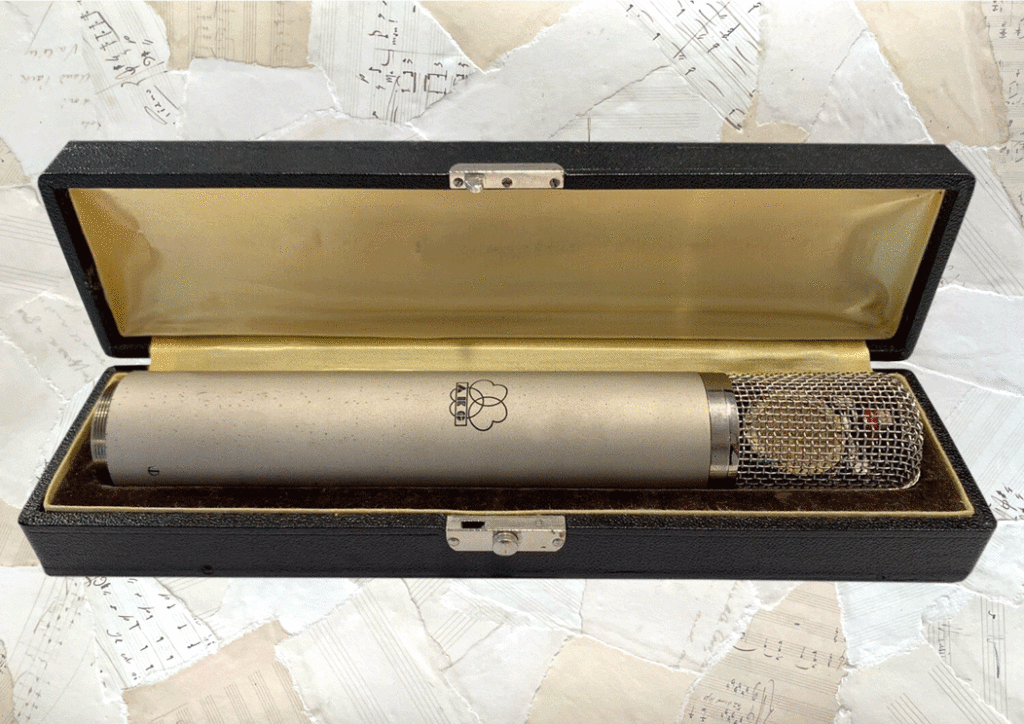
Over the next 50 years or so, the AKG C414 continued to evolve, as they tried out various capsules within the microphone. The AKG C414 EB was the very popular early version, using the CK12 capsule. It was known as the “brass ring capsule” as it was held together with a brass ring.
The CK12 capsule was complicated to manufacture, so AKG made new, simpler designs, that had a ring of white plastic replacing the former brass ring.
A popular version of the C414 with the new capsule was the C414 B-ULS (Ultra Linear Series) of 1986. It aimed to achieve a very flat, neutral sound, and had an improved noise floor.
There’s currently two AKG C414 models offered for sale today – the AKG C414 (XLS) and the AKG C414 XLII, (reviewed here). The C414 (XLS) is designed for a neutral and pure sound, similar to the earlier C414 B-ULS.
The AKG C214 appeared in 2008, marketed as a minimalist budget version of the C414, closer to the XLII than the XLS. It became an instant hit, and is currently one of the most popular condenser microphones in the world.
Dynamic vs condenser microphones
You’ve probably heard a lot about two different types of microphone: condenser microphones such as the AKG C214, and dynamic mics such as the Shure SM58 (review here). With both of these commonly found in the recording studio, what are their strengths and weaknesses?
Dynamic microphones
Dynamic microphones have a more robust and durable mechanism. They’re less likely to get damaged if knocked or dropped, making them great for live gigging environments. They tend to be less sensitive than condenser mics, better at rejecting unwanted noise and coping with louder sound sources. However, they’re not so good at reproducing high frequencies, or subtle dynamic details.
Condenser microphones
Condenser microphones are more sensitive than dynamics, and offer a lot more detail and clarity. Their ability to handle higher frequencies gives them a spacious, sparkling, airy quality. There’s no doubt they’re better at reproducing the subtle nuances of instruments or a singer’s voice. The delicate internal mechanism of condenser mics means they need to be looked after, making them well suited to a recording studio.
AKG C214 vs C414 XLII
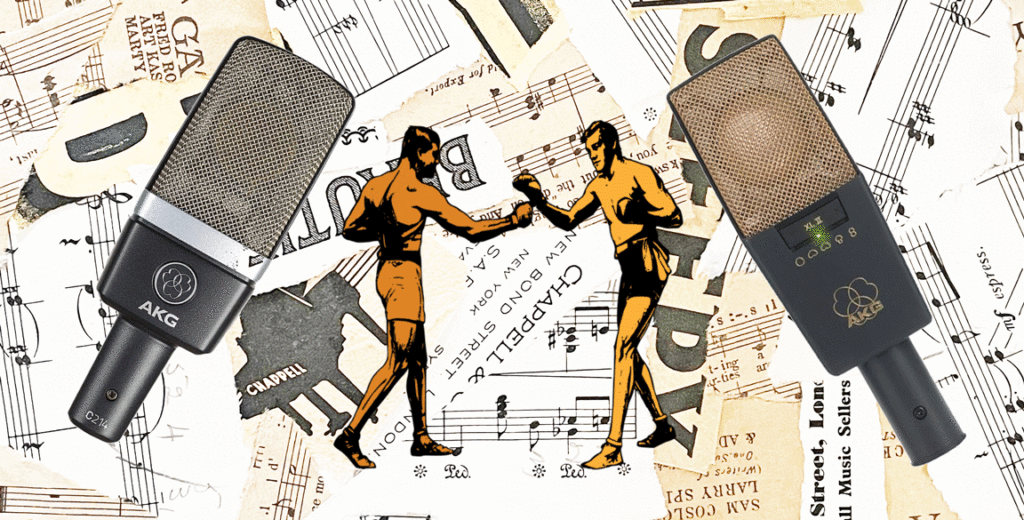
The AKG C414 XLII and the C214 look very similar, with the C414 sporting harder lines, and corners. They both come with a shock mount, windscreen and metal carrying case as standard, but the C414 also includes a pop filter. Sound-wise, both mics are bright, detailed and clear, with the the C214 slightly more pronounced and upfront in the high end.
The AKG C414 XLII is a modern and updated version of the earlier classic C414 microphone. It features the same high-fidelity sound, but now has a greatly expanded list of useful features and additions.
Whilst the C214 has a fixed cardioid polar pattern, the C414 is able to choose from an impressive 9 possible polar patterns. It offers omnidirectional, wide cardioid, cardioid, hypercardioid, and figure of eight, as well as ‘in-between’ settings. This makes the C414 XLII an extremely versatile mic, easily adapting to any studio situation you throw at it.
And it doesn’t stop there – the C414 XLII also has more options than the C214 when it comes to the pre-attenuation pads, with settings at -6db, -12db and -18db. This gives you the option of recording a range of input levels – from a whispering vocal to a fortissimo brass stab.
You can also alter the bass response, with low cut filter settings at 40Hz, 80Hz and 160Hz. This not only opens up the range of suitable instruments and vocalists, but also how near to the source you can place the mic without adding too much bass (due to the proximity effect).
The C414 XLII affords you a level of fine-tuning far greater than the C214, but without compromising on sound. The C414 XLII offers truly premium quality sound – it’s capable of producing impressively clear and detailed recordings. Clearly the C414 wins the battle here, but there’s a price to pay – your hard earned cash.
The AKG C214 retails at less the half the price of the C414, so it’s a realistic way of getting that classic AKG sound into your productions choice for many people. AKG have stripped the features down to the bare essentials, whilst still offering some good functionality.
Read the full AKG C414 XLII review here
AKG C214 vs Rode NT1
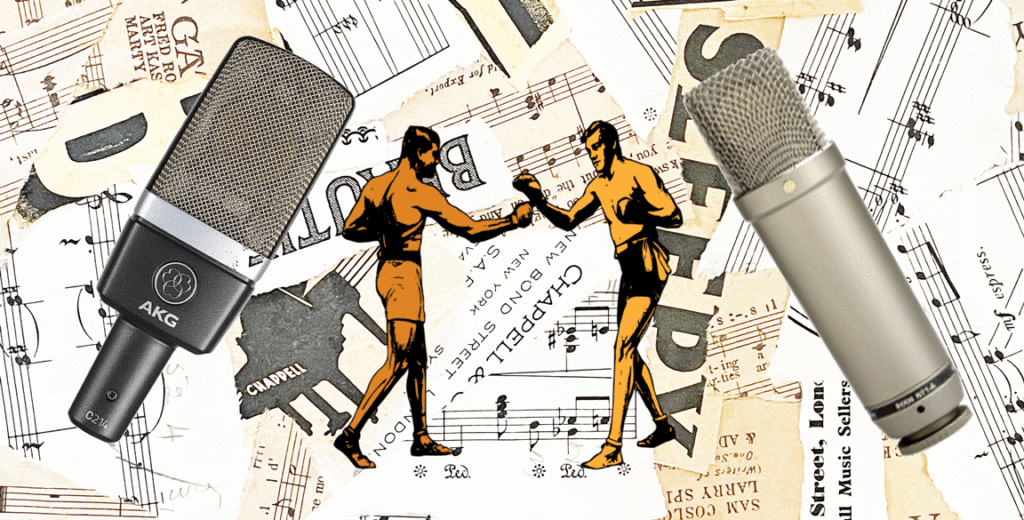
The Rode NT1 is a cardioid condenser mic, very popular for home studio setups on a budget. It has a distinctive look, smooth uncoloured sound, and a durable build quality. The NT1 works well on a variety of sound sources – vocals, acoustic guitar, hand percussion and other instruments.
One big difference between Rode NT1 and the AKG C214 is the lack of switches on the NT1. Unlike the C214, there’s no low-cut filter, and no pre-attenuation pad, so what you hear is what you get. It definitely keeps things simple, and if you do end up with too much bass on your recording, you can always take it back out with Eq in post-production.
As for the lack of a pad, it makes the NT1 less versatile than the C214 as an all round studio mic. With a fixed max SPL of 132dB, the Rode NT1 won’t be able to handle the loudest instruments, such as brass and drums. Whereas the C214 will handle most sounds thrown at it, with its max SPL of 156dB.
An important difference between the two microphones is in the sound. The Rode NT1 has a very flat response throughout the frequency range, and a smooth warm tone. Whereas the AKG C214 has more of a scooped midrange and a presence boost in the high end. This gives the 214 a brighter, more airy quality and perhaps a more flattering sound in general. In practice I found the NT1 to be a little more present in the high mids, and harsh sibilance was less well controlled when compared to the C214.
The Rode NT1 and AKG C214 are both great microphones, and to some extent it will come down to your needs and personal preference. For those on a budget the NT1 is a bit cheaper, and the flat frequency response may be best for creating uncoloured recordings on a variety of instruments. I personally find it better than the C214 for spoken word.
But the pre-attenuation pad of the AKG C214 makes this mic more versatile as an all-rounder in the studio. The brighter sound will also help your vocals stand out with a bit of extra sparkle and shimmer. If you can’t make up your mind, there is also the Rode NT1-A, which is slightly cheaper than the NT1. While the frequency response of the NT1 is flat, the NT1-A has more of an open and airy top end.
AKG C214 vs Shure SM7B
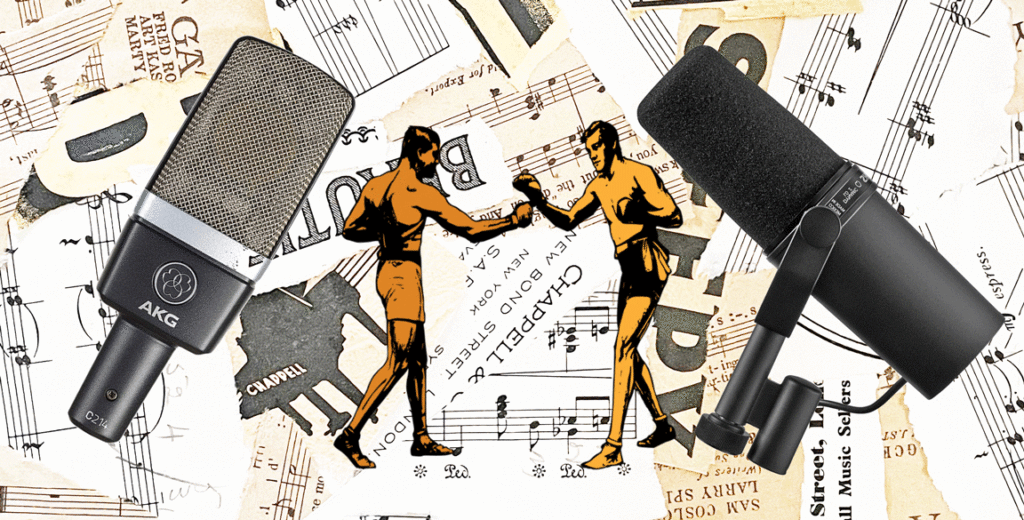
The Shure SM7B can be found in podcasting and radio studios around the world, as well as many music studios. It’s a popular midrange mic, with a cardioid polar pattern, but unlike the AKG C214, the SM7B is a dynamic microphone.
So why am I comparing a condenser mic to a dynamic mic, when dynamic mics are more associated with live use?
There are advantages and disadvantages of using a dynamic microphone in the studio. One advantage is they’re less sensitive, picking up a lot less background noise or room reverberations. The flip side of this is they’re less able to pick up nuance and fine detail, particularly in the high frequencies.
The Shure SM7B has a very warm, rounded quality to its sound, and this is one of the reasons why it is prized for radio and spoken word. By contrast the AKG C214 has a much more pronounced airy top end, more restrained through the mids and high mids.
Another advantage of dynamic microphones is that they’re very high max SPL – the SM7B reaches a maximum of 180dB. This far exceeds the maximum of the C214, even with the pad engaged. So you’ll be able to record the very loudest sounds, think close miking a brass band or rock drum kit. But the cost of this is a very low output level. In practice, many people pair the SM7B with a mic preamp to step the gain up a few dBs. In contrast, the AKG C214 has no such issues, and provides a very usable line level.
If you’re struggling to decide between the AKG C214 and the Shure SM7B the right choice might depend on your circumstances. If you’re looking for a microphone to record spoken word, the Shure SM7B is a natural choice. If you have an untreated noisy room, again the Shure will be best at rejecting unwanted sounds.
However, if you have a half decent recording environment, and are looking to capture crisp, detailed and clear sounding recordings, the AKG C214 is probably going to be your preferred choice.
AKG C214 and the proximity effect
Where you place the microphone in relation to your instrument or mouth can make a big difference in sound.
If there’s other instruments or singers in close proximity and you only want to capture yourself, it’s best to sing or play directly into the mic. This will also cut out some of the sound of the room.
Normally being close to the mic will add more bass, but with the AKG C214, you do have the option to cut the bass response with the bass roll off switch.
For a more natural, balanced sound, place the mic between 5 and 10 cm away from the sound source. There’ll be less of the proximity effect, and the mic will pick up more sounds from other instruments, and the acoustics of the room.
To bring in more of the room sound, and the instruments around you, place the mic 10 cm or more away from you. This is also a good position to account for any unexpected peaks in volume.
What else do you need?
The AKG C214 also ships with two accessories – an external shock mount, and a foam windscreen. It is always a good idea to use an external shock mount with a condenser microphone to reduce stand noise or vibrations. The windscreen can be used in place of a pop shield to eliminate pops, clicks and plosives. Both these accessories t fit snugly alongside the mic in a bespoke metal carrying case.
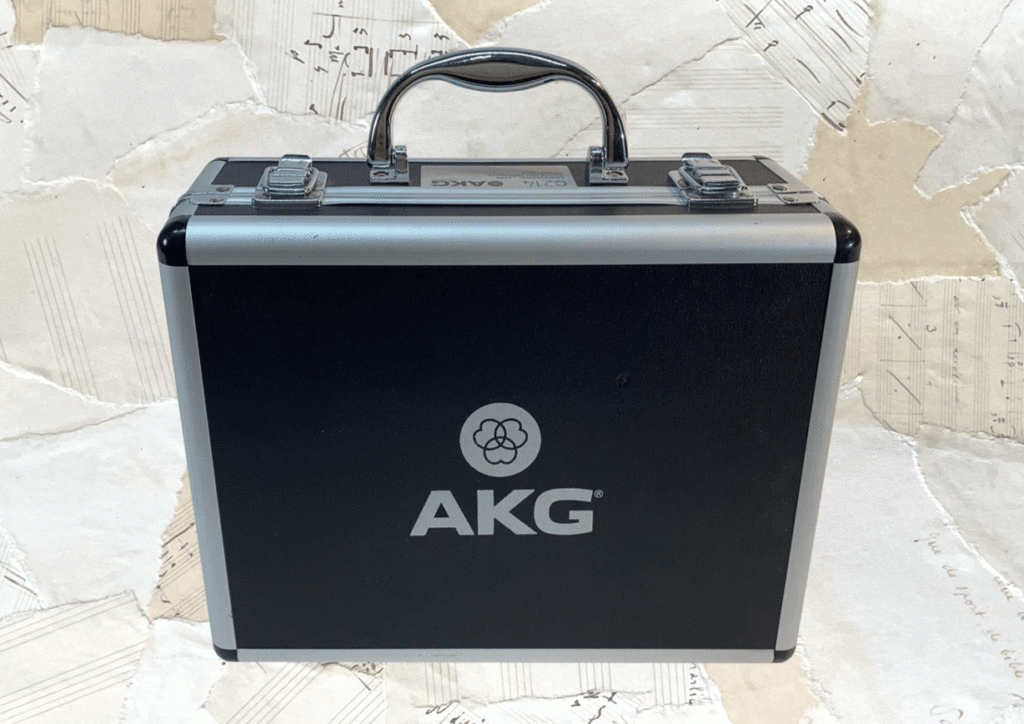
You will however need:
- Microphone stand
Large diaphragm condenser mics like the C214 have to be mounted on a stand. This will reduce any handling noise in the studio. Try a good quality boom stand, with a tripod base like the K&M 210/2
- XLR cable
If you invest in a premium condenser microphone such as the C214, it’s definitely worth getting a good quality cable. If you want the best quality XLR cables, try these. Go for the shorter lengths where possible.
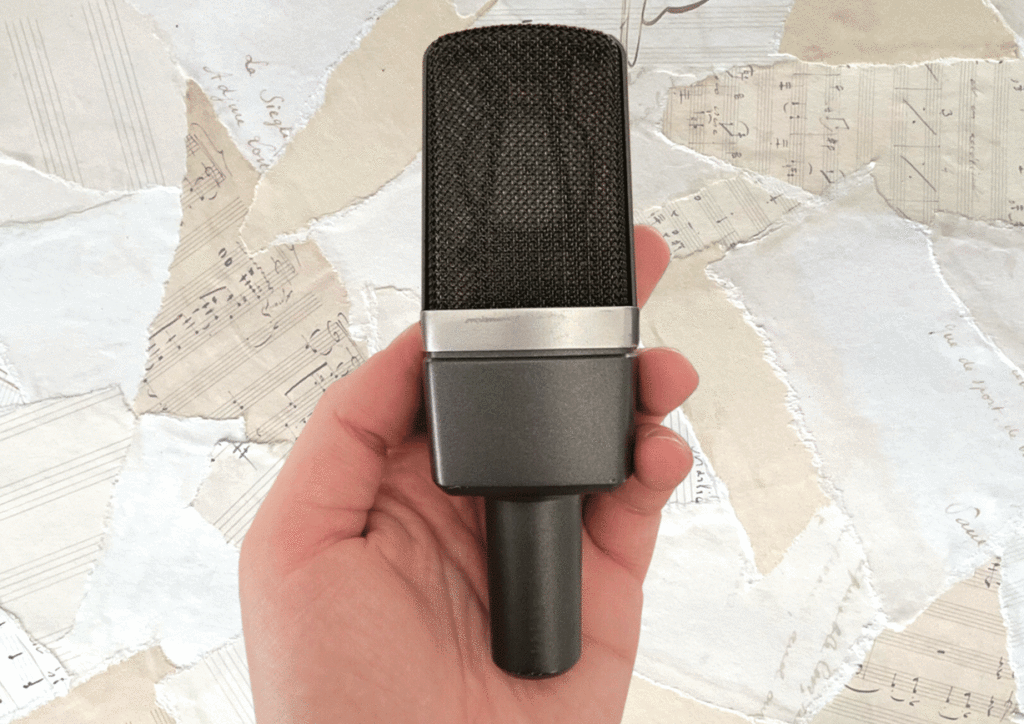
Conclusion
The AKG C214 is an affordable, high quality studio condenser with a bright, clear sound. It’s a no frills, solid AKG mic, well suited to a variety of instruments, and a wide range of vocal styles.
The -20db pad makes it simple to switch between horns, drums, vocals, electric guitar, acoustic guitar, and a wide range of sound levels. The AKG C214 is a great choice for anyone aspiring for the legendary AKG sound, at a reasonable price.
AKG C214 Frequently Asked Questions
Does the AKG C214 need phantom power?
The AKG C214 is a condenser microphone, so it does require phantom power. You can receive power from the mixing desk, audio interface or a stand-alone unit
Can you use condenser mics on stage?
Condenser mics are a great choice for stage use as long as they have been designed specifically for live use. They’ll deliver a higher quality sound than dynamic mics.
Which artists use the AKG C214?
Artists seen using the AKG C214 include Steve Vai, Bootsy Collins and Lil Peep.
Read about our pick of the best mics for recording vocals
